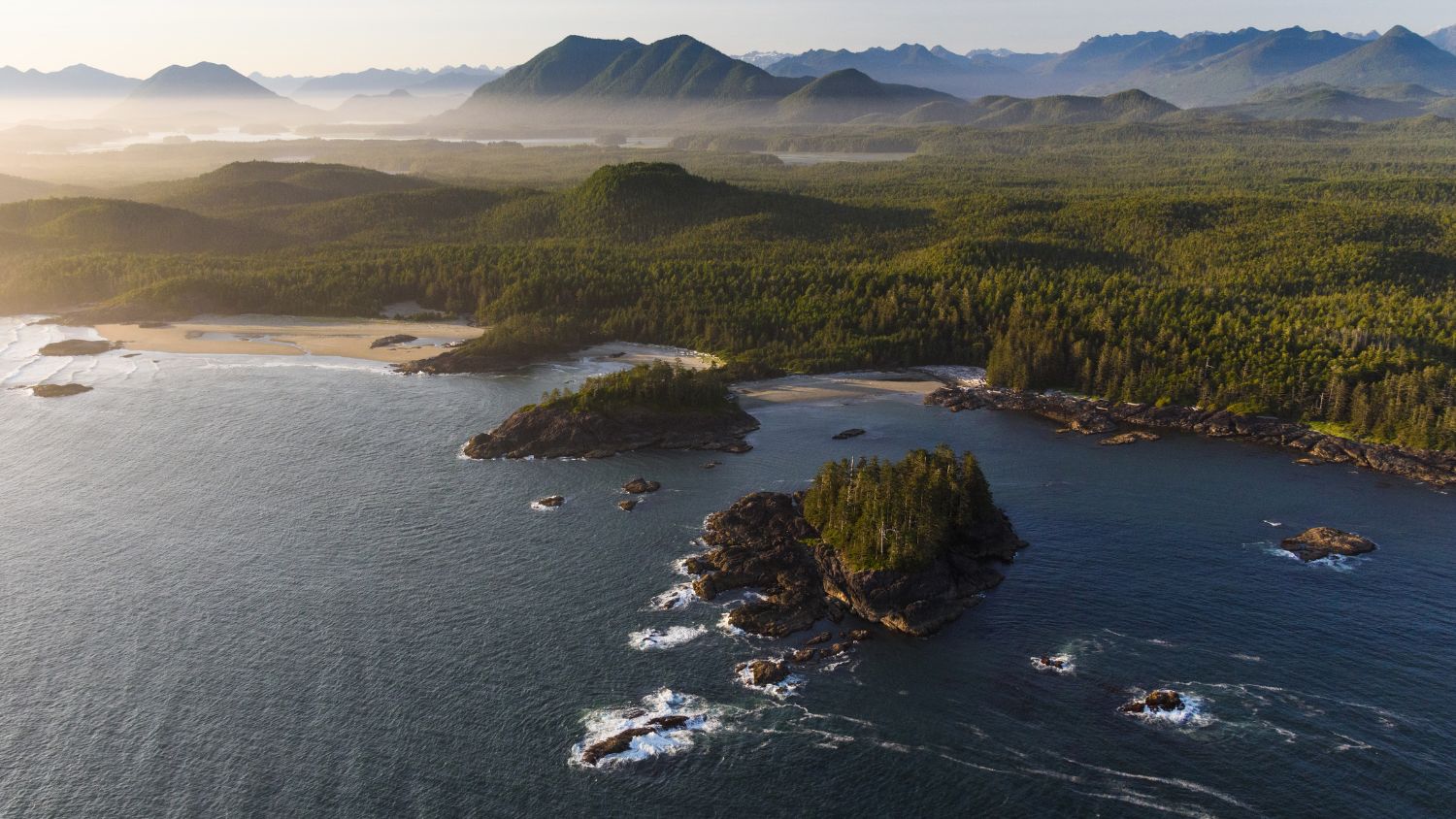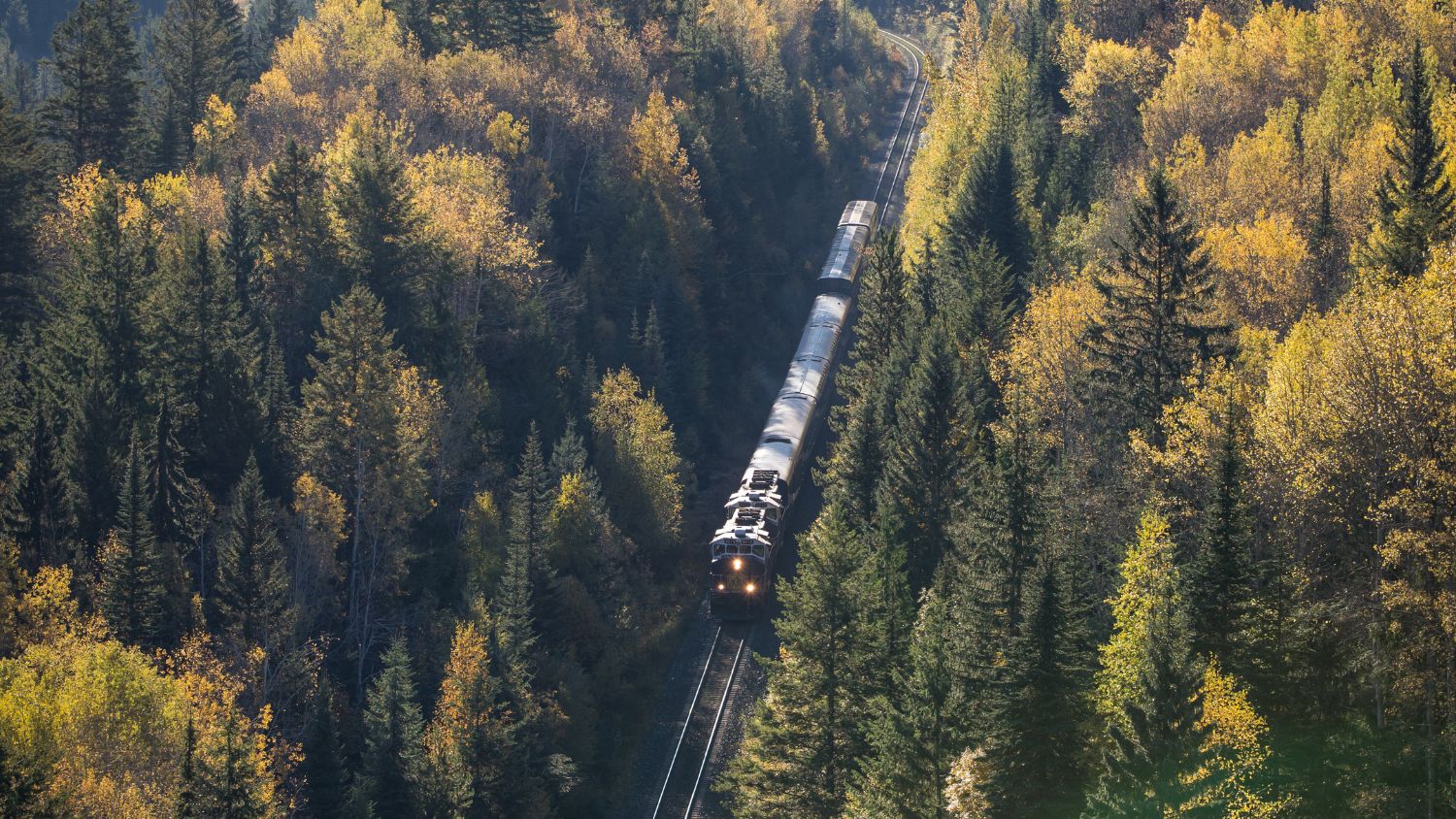Whether this is Land’s End or Land’s Beginning depends on how you approach it.
THAT IS THE ARGUMENT I put to my wife as we left Quebec’s Grande-Grave in Forillon National Park in a whale watching zodiac, following some playful, showboating humpbacks far out to sea. Minke whales, white-sided dolphins, and seals joined the performance, jumping, flashing their tails and arching their sleek bodies through surf that was gradually getting more
tempestuous.
We turned for home, pounding through the chop and spray until the welcoming Cape Gaspé lighthouse materialized on the horizon. These limestone cliffs would have comforted mariners in day’s past, while the small lighthouse high atop would have warned the sailors off from an untimely meeting with Land’s Beginning. Just as I thought the Land’s Beginning argument was gaining traction, however, our know-all whale interpreter pointed out that Gaspé is an indigenous Mi’kmaq word meaning “Land’s End.”
I must also stand corrected on my story title. I found that our road trip to Land’s End was not a drive to a dead-end, but rather a wonderful circle trip, and the outcrop that is Forillon National Park was but a magnificent pause midway through our journey. We will return to Forillon in due course, but let’s start at the beginning, which for us was at the Pointe-au-Père Maritime Historic Site, just outside of the Gaspé in Rimouski. Three exhibits on this site will become themes for our coming adventure.

Pointe-au-Père lighthouse, in Pointe-au-Père Maritime Historic Site : Mathieu Dupuis/Le Québec maritime
Firstly, the Empress of Ireland museum tells the story of the tragic 1914 sinking of this transatlantic liner, one of the worst Canadian maritime disasters. This coastline is notorious for its intense fog, shoals and tides. This then explains the need for the 33-metre-high Pointe- au-Père Lighthouse. You can climb its 128 steps for a terrific view. We will be passing 14 more of these sentinels on our coastal journey. The third feature on the site is the Cold War submarine Onondaga, where we take a fascinating onboard tour. How is this a theme for our trip? Well, after my wife witnessed what a submariner’s life was like in those cramped quarters, a road trip around the peninsula stuck in a vehicle with me suddenly seemed more Palatable.
It is also at this historic site that my wife agrees with my decision to travel our route counter-clockwise, as I like to drive on the edge. Route 132 will initially take us south across the Matapedia Valley, and this part of the drive, away from the coast, gives me a chance to give a quick geography orientation. The Gaspé (Gas-Pay) Peninsula, Gaspésie in French, is a 31,000 square kilometre chunk of Quebec that extends 240 km into the Gulf of St. Lawrence. French is widely spoken, but Anglophone tourists are treated very nicely, won’t starve, and will quickly figure out how to order a bière at a Microbrasserie.

Empress of Ireland museum, in Pointe-au-Père Maritime Historic Site : Mathieu Dupuis/Le Québec maritime
We return to the coast at Pointe-a-la-Croix, with a brief stop at the Battle of Restigouche National Historic Site on Chaleur Bay. On July 8, 1760, the last naval battle between French and English took place here, sealing the fate of New France. From here we steer northeast, the coastal highway will hug the water (and everything else worthwhile) for the rest of our trip. Each town we pass through has its own picturesque features, whether a museum, quaint harbour or lighthouse, which are in such abundance that not only is there an official lighthouse trail, but locals also use them when giving directions – as in, drive past your third lighthouse and hang a right. Lighthouses along the coast are hard to miss, which I guess is the point, and each has its own story, its own personality. We pass our first one in Carleton-sur-Mer, along with our first microbrewery. I find both hard to drive past without taking a break.
The landscape slowly shifts from gentle rolling farmlands to the rollercoaster hills of Haute-Gaspésie. After two days of travelling through sleepy fishing villages, we arrived in vibrant Percé, with its eclectic mix of artisan shops, bistros, and seafood eateries. Percé’s star attraction, and the region’s most iconic landmark is the 400-million-year-old, 433 m. long, 90 m. wide, and 88 m high, Percé Rock. We grab mandatory selfies with the pierced rock behind and then book a boat trip to get a closer look.

The Frederick-James village at Cap Canon with Percé Rock in the background : Marc Loiselle
Bateliers de Perce offers a fantastic boat trip, for views around the rock and an afternoon touring Bonaventure Island, where 110,000 northern gannets make up the world’s largest and most accessible colony. We amble along Les Colonies trail to where the gannets squawk, feed and make guano. The noise and stench is incredible, but the spectacle is worth the sensory risks. On the cliffside trek back to the wharf, we see puffin, razorbills and seals basking on the rocks.
Just north of Percé is Gaspé’s largest town, Gaspé (population 15,000). Explorer Jacques Cartier planted a wooden cross near here in 1534 and claimed the territory for France. The Jacques Cartier Monument National Historic Site is worth a visit, as is the Musée de la Gaspésie, which displays, among other things, a dented torpedo fired into the dangerous rocks by a German U-boat prowling offshore in 1942.

Whales off Cap Gaspé, Forillon National Park : Marc Loiselle
At the easternmost tip of the Gaspé is Cap-Bon-Ami, where the ragged Appalachian Mountains tumble precariously into the Atlantic Ocean. Forillon National Park is known for dramatic views, hiking, sea kayaking, wildlife, whales and historic sites. We stay two nights and indulge in a bit of everything, hiking Le Chute trail to a pretty waterfall, climbing up to the summit of Mont Saint-Alban for its panoramic view, and trekking Les Graves trail to land’s end to stand beside the cliff top lighthouse we had seen during our whale watching tour. We go kayaking along the ragged shoreline in search of harbour seal colonies, drop into Hyman & Sons General Store, a restored shop that served the area’s golden era of cod fishing, and visit Fort Peninsula, a Second World War naval base built to protect the Gulf of St. Lawrence from U-Boat attacks and provide a haven for the Allied fleet in the event Great Britain was invaded.

Gaspesian artist Marcel Gagnon : Studio du Ruisseau
The north coast of the Gaspé is a spectacular mix of rocky coves, hills and more lighthouses. From Forillon, Route 132 soars to celestial heights before dipping into deep bays, then out onto windswept capes. The shoreline is a constant companion, the highway squeezed to the coast by the Chic-Choc Mountains. We stop to do some mountain hiking in Parc national de la Gaspésie and to smell the flowers at the expansive Redford Gardens in Grand-Metis.
Our amazing road trip returns us to Rimouski, full of the memories and sensations of the natural beauty, impressive scenery and varied landscapes of this coastal drive, and of the cultural attractions and culinary delights that abound, where every lobster fisher, guide, naturalist, chef, artist, and every lighthouse, has a story.
Road Trip Tips
THE ROUTE
Route 132 begins some 350 kilometres east of Quebec City and is a 10 1/2-hour drive from Toronto, so you have a ways to go from a major hub before your Gaspé road trip technically even starts. I consider this a positive. Any closer and this delightful drive might be overrun. Although it is doable in two or three days, this certainly is not recommended.
MUST STAY
At Forillon National Park we stayed in a funky, spaceship-shaped Oasis, a fairly new Parks Canada accommodation. Built high on stilts, with a clear view of the night sky and open to the sound of the pounding surf, this seaside glamping option fits in perfectly with the landscape of Land’s End.
MUST EAT

Seafood dishes in Percé : Roger St Laurent/Tourisme Gaspésie
The best seafood in Percé can be found at La Maison du Pêcheur. The seaside restaurant has a diverse menu of delectable seafood options. Authentic dishes like sea urchin cream soup, cod cheeks, Gaspésie lobster, salt-cured cod pizza and something called winkles in garlic sauce (sea snails), give you a taste of the region. Throughout the Gaspésie, casse-croûtes (roadside food stalls) serve up the Québécois staple poutine, gravy-smothered cheese curds and fries.
MUST DO
Exploramer was described inadequately as a hands-on aquarium for visitors who like touching wet things, including a rare blue lobster and all manner of crustaceans. There is a shark exhibit including Great Whites that lurk in the area – but they are not in the touch pool. Most captivating was a walk on the seafloor at low tide. Donning baggy hip-waders with attached rubber boots, we went skulking around the tidal flats and splashing through the pools with an interpreter, observing all kinds of fascinating sea life trapped and exposed.
FAVOURITE LIGHTHOUSE

Pointe-à-la-Renommée Lighthouse : Camille Malleroni, L’Oiseau Rose/Le Québec maritime
We had to take a short detour on a dirt road off the main route, but it was worth it to tour the Pointe-à-la-Renommée lighthouse station on the peninsula’s north shore, to learn of the life of a keeper and his family, and to tour the first maritime radio station in North America. The lighthouse itself was kidnapped and re-situated in Quebec City, until a public outcry brought it back home.
tourisme-gaspesie.com | quebecmaritime.ca | parkscanada.gc.ca/forillon













